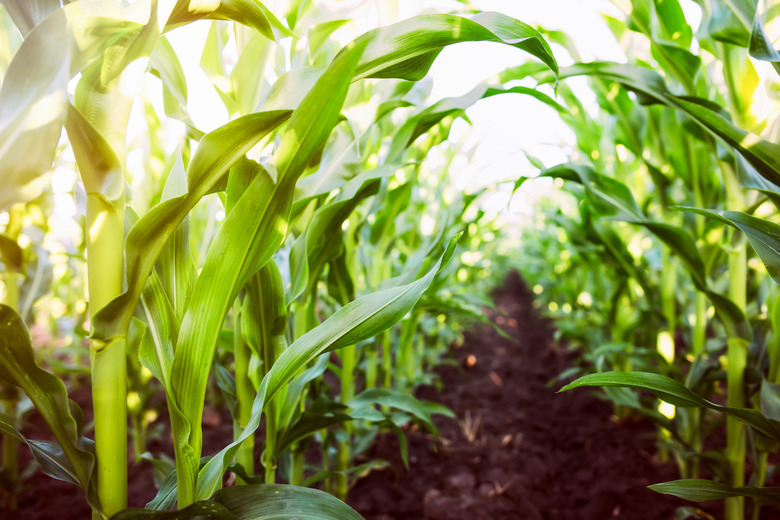Internal & External Parts Of The Plants
At first glance, plants consist of roots, stems, leaves and sometimes flowers. While these visible structures play a role in the plant's survival, within those roots, stems, leaves and flowers, you will find internal structures that also allow plants to carry out such basic functions as water transport and seed production.
Roots
Roots
Roots provide structural support for the plant to absorb water and nutrients from the soil. The outside of the roots reveals many fine hairs, which expand the surface area of the roots and allow the plant to absorb more water. Inside the root, at the cellular level, actively growing areas called meristem let the roots constantly grow into new territory. The epidermis and cortex cells move water from the soil and into the vascular tissue that carries water up the stem.
Stems
Stems
Stems offer physical support to the plant and contain the buds that develop into leaves, flowers and additional stems. Within the stem, vascular tissue transports materials to places within the plant where they are most needed. Vascular tissue called xylem transports water and minerals absorbed from the roots to the stems, leaves and flowers. Phloem, on the other hand, carries sugars produced in the leaves to areas in need of energy, such as the plant's root system.
Leaves
Leaves
The seemingly simple leaf actually contains the cellular machinery needed to drive the plant's most basic life process: the synthesis of chemical energy from water, carbon dioxide and sunlight. Observing a leaf, you can see the veins containing xylem and phloem that deliver water to the cells and carry away sugars produced during photosynthesis. Within the leaf and out of sight, the leaf contains layers of cells packed with chloroplasts used for harvesting sunlight and turning it into sugar. Leaves also contain tiny pores called stomata that allow the plant to take in carbon dioxide and release oxygen produced during photosynthesis.
Flowers
Flowers
Flowers contain complex structures, both internally and externally. Looking at a flower, you general notice its sterile tissue first: the ray of colorful petals that attract your attention and that of the flower's pollinators. At the flower's center, you will find a female pistil, surrounded by club-topped filaments called stamens. Stamens produce pollen, which lands on the pistil and grows downward into the flower's internal parts to release sperm to fertilize the egg. The flower's ovary contains one or more ovules, each with the potential to develop into a seed when fertilized. The walls separating the ovules form into the tough coating that protects the seed.
Seeds
Seeds
If you break into a seed, you will find that most of it contains a starchy substance called endosperm, which nourishes the embryo as it develops. The embryo includes one or two primitive leaves called cotyledons that also sometimes play a role in energy storage.
Cite This Article
MLA
Walls-Thumma, Dawn. "Internal & External Parts Of The Plants" sciencing.com, https://www.sciencing.com/internal-external-parts-of-the-plants-12003885/. 22 November 2019.
APA
Walls-Thumma, Dawn. (2019, November 22). Internal & External Parts Of The Plants. sciencing.com. Retrieved from https://www.sciencing.com/internal-external-parts-of-the-plants-12003885/
Chicago
Walls-Thumma, Dawn. Internal & External Parts Of The Plants last modified March 24, 2022. https://www.sciencing.com/internal-external-parts-of-the-plants-12003885/
